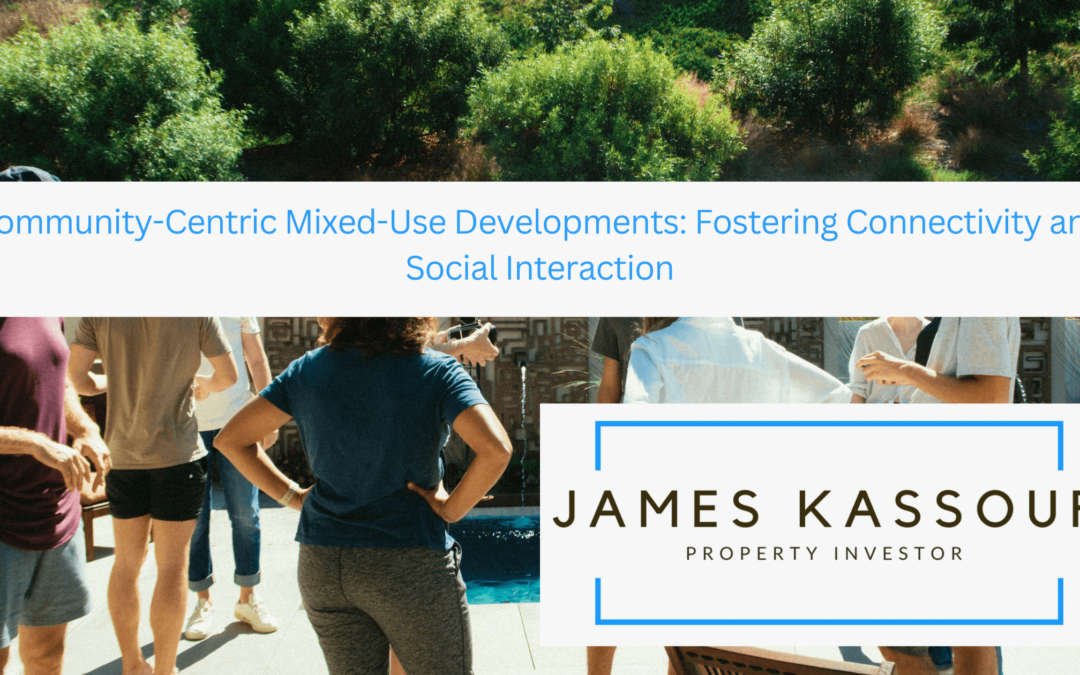In the ever-evolving landscape of urban living, community-centric mixed-use developments have emerged as beacons of connectivity and social interaction. These innovative projects transcend traditional urban planning by creating vibrant, inclusive, and people-centric neighborhoods. By blending residential, commercial, and recreational spaces, community-centric mixed-use developments foster a sense of belonging, encourage social interaction, and revitalize the fabric of modern cities.
A Place to Belong:
At the heart of community-centric mixed-use developments is creating a place where residents, workers, and visitors feel a strong sense of belonging. By integrating various functions into a cohesive and walkable environment, these developments become more than just physical spaces; they become a community hub where people of all ages, backgrounds, and interests converge.
Promoting Social Interaction:
One of the greatest strengths of community-centric mixed-use developments is their ability to encourage social interaction. The intentional design of shared spaces, such as parks, plazas, and community centers, serves as natural gathering spots where individuals can meet, socialize, and build meaningful relationships. These spaces become the heart and soul of the development, fostering a sense of community and camaraderie among residents and visitors.
Enhancing Quality of Life:
The presence of diverse amenities within a community-centric mixed-use development enriches the quality of life for its inhabitants. Residents have easy access to a wide range of services, such as grocery stores, restaurants, gyms, healthcare facilities, and entertainment venues, all within walking distance. This convenience reduces the need for long commutes and enhances the community’s well-being.
Supporting Local Businesses:
Community-centric mixed-use developments provide a nurturing environment for local businesses to thrive. Integrating small-scale retail establishments and boutique shops creates opportunities for entrepreneurs and artisans to showcase their products and services to a captive audience. As a result, these developments contribute to the economic growth of the surrounding area and foster a unique and diverse business ecosystem.
Sustainable and Eco-Friendly:
The emphasis on walkability and compact design in community-centric mixed-use developments promotes sustainability. By reducing the dependence on cars and encouraging walking and cycling, these developments contribute to a lower carbon footprint and decreased traffic congestion. Additionally, incorporating green spaces and energy-efficient buildings aligns the development with eco-friendly practices, making it an attractive choice for environmentally conscious residents.
Creating a Safe and Secure Environment:
Community-centric mixed-use developments often prioritize safety and security. With high foot traffic and a vibrant atmosphere, these spaces naturally become safer, discouraging crime and enhancing the perception of safety. Furthermore, the presence of active and engaged residents contributes to community policing, creating a strong and supportive social network.
Empowering Inclusivity and Diversity:
Community-centric mixed-use developments celebrate diversity by providing spaces catering to various interests, lifestyles, and demographics. Integrating affordable housing alongside market-rate units ensures the development remains accessible to people from different income brackets. This inclusivity fosters a diverse and dynamic community where residents learn from one another and grow together.
Resilience in Changing Times:
Community-centric mixed-use developments can demonstrate their resilience in times of uncertainty or crisis. The diverse revenue streams from residential, commercial, and recreational components offer a level of stability and adaptability that single-use developments may lack. The sense of community and social cohesion within these developments also strengthens residents’ ability to support one another during challenging times.
Community-centric mixed-use developments are not just buildings but living, breathing communities promoting human connection and social well-being. By focusing on creating spaces that foster connectivity, inclusivity, and social interaction, these developments enrich the lives of their residents and contribute positively to the surrounding urban environment. As cities evolve, the rise of community-centric mixed-use developments signals a shift towards a more holistic and community-driven approach to urban living, where people and their interactions are at the center of the design. Investing in such developments can offer financial returns and the satisfaction of being part of a thriving and closely-knit community.

